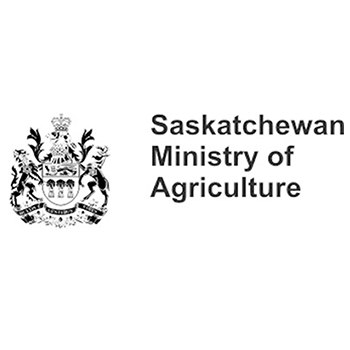Many producers experienced cool, damp weather this past week which halted or slowed their harvest operations until conditions improved. Other producers that were able to continue either finished their harvest or are very close to doing so.
Harvest progress for the province is at 73 per cent, up from 64 per cent last week and ahead of the five-year (2017-2021) average of 68 per cent. An additional 18 per cent of the crop is ready to be swathed or straight-cut.
Harvest is most advanced in the southwest region, where 96 per cent of the crop is now combined. The west-central region has 89 per cent combined and the southeast 65 per cent. The northwest region has 63 per cent combined, the northeast 58 per cent and the east-central 52 per cent.
Ninety-seven per cent of the lentils and field peas, 94 per cent of the durum, 78 per cent of the barley, 77 per cent of the spring wheat, 52 per cent of the canola and 35 per cent of the flax has now been combined. An additional 36 per cent of the canola is swathed or ready to straight-cut.
Precipitation was generally welcomed after several weeks of dry weather. Concerns about field and equipment fires have eased and there is hope that the rain will be enough in some areas to allow pastures a little regrowth. The Pelly area received 44 mm, the Melfort and Moosomin areas 30 mm, the Lipton area 13 mm, the Rosetown area nine mm and the Vanguard area four mm.
The majority of crop damage this week was due to wind, waterfowl, wildlife and lack of moisture. There were several reports of hard frosts in across the province but producers say damage is low due to crops being so well advanced. The recent rain will likely cause some minor downgrading to standing or swathed cereal crops due to bleaching.
Producers are busy wrapping up harvest, hauling bales, moving cattle home or to market, hauling water and engaged in post-harvest field activities such as herbicide application.
Northwestern Saskatchewan
Some producers continued their harvest operations without delay, while others were halted for several days due rain, followed by cool, damp weather. Sixty-three per cent of the crop is now in the bin, up from 47 per cent last week and well ahead of the five-year average of 41 per cent. Most of the cereal crops in the region have been harvested with only a few acres left to be cleaned up. Producers are working mainly on their canola acres at the moment.
A few areas did receive some rain in the region, the first rain in several weeks for some. The Pierceland area received 21 mm, the Duck Lake area 18 mm, the Hafford area seven mm and the Glaslyn area four mm.
Cropland topsoil moisture is rated as 22 per cent adequate, 72 per cent short and five per cent very short. Hay and pasture land topsoil moisture is rated as 22 per cent adequate, 68 per cent short and ten per cent very short.
Pasture conditions are rated as 12 per cent good, 47 per cent fair, 38 per cent poor and three per cent very poor.
The majority of crop damage this past week was due to wind, frost, waterfowl, and wildlife. Producers have noted green regrowth is making harvest difficult but hope the frost will cause the regrowth to die down.
Producers are busy combining, swathing, grain drying and moving bales.
Northeastern Saskatchewan
Harvest was postponed for many this past week as some rainstorms rolled through and made for very poor harvesting conditions. Fifty-eight per cent of the crop is now in the bin, up from 41 per cent last week and ahead of the five-year average of 51 per cent. Producers are hoping for warm, dry weather to advance crop maturity and assist with drying down, especially on canola, where some stalks remain green.
There was some very good precipitation across the region last week with many areas receiving more than an inch. The Prince Albert area received 41 mm, the Melfort area 30 mm, the Zenon Park and Star City areas 25 mm and the Humboldt area 12 mm.
Cropland topsoil moisture is rated as 77 per cent adequate and 23 per cent short. Hay and pasture land topsoil moisture is rated as 68 per cent adequate and 32 per cent short. After harvest has concluded in the region, crop and pasture land would benefit from further rainfall.
Pasture conditions are rated as seven per cent excellent, 41 per cent good, 43 per cent fair, eight per cent poor and one per cent very poor. Pastures in this region are in better shape than they were last year and producers are much less concerned about their ability to graze cattle, a couple gentle rains in the fall however, would do them some good.
The majority of crop damage this past week was due to wind, frost and waterfowl. The rain has caused some weed growth along with some crop regrowth, producers are evaluating the need to spray. The areas that received heavy amounts of rain fall are also at a higher risk of seeing their standing or swathed cereal crops become downgraded due to bleaching. Producers are busy swathing, combining, drying grain and hauling bales.


